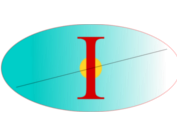Citation:
| livshits2009.pdf | 3.87 MB |
Abstract:
Density functional theory (DFT) with semilocal functionals such as the local-density and generalized gradients approximations predicts that the dissociative adsorption of oxygen on Al (111) goes through without a barrier in stark contradiction to experimental findings. This problem motivated our study of the reaction of oxygen colliding with a small aluminum cluster Al-5. We found semilocal functionals predict a minute barrier to sticking, associated with smeared long-range charge transfer from the metal to the oxygen. Hybrid B3LYP predicts a larger barrier while the range-separated the Baer-Neuhauser-Livshits (BNL, Phys. Chem. Chem. Phys. 2007, 9, 2932.) functional finds a more prominent barrier. BNL predicts short-ranged and more abrupt charge transfer from the surface to the oxygen. We conclude that spurious self-repulsion inherent in semilocal functionals causes early electron-transfer, long-range attraction toward the surface and low reaction barriers for these systems. The results indicate that the missing DFT barrier for O-2 sticking on Al (111) may be due to Spurious self-repulsion.
Notes:
RBaer-Publication



